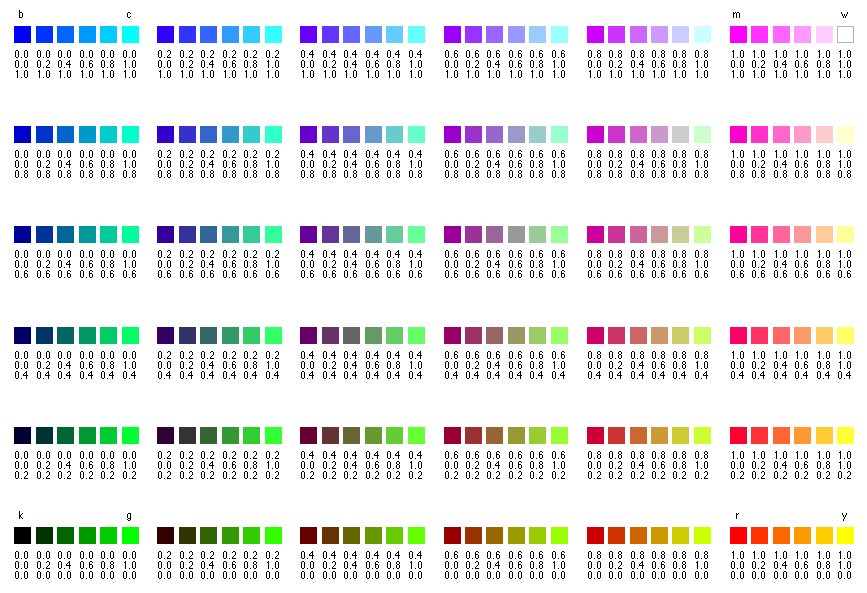
#MATLAB PLOT COLORS ASSIGN COLOR NAME CODE#
Here we discuss an introduction to Matlab Plot Colors, along with color code table and respective examples. There could be instances when we have to plot multiple functions in a single plot, in such cases, colors become very handy to differentiate between different functions. MATLAB can be used to plot our data for visualizing and intuitively understanding it. If time contains date strings instead, call datenum on it, first). Say you have x, y, and time (where time is a numeric vector. Observe in the output that we have obtained a scatter plot of red color, as passed by us in the input argument. The simplest way to color a scatter plot by an additional variable is to simply pass it as the 'color'-argument. Observe in the code that we have passed pre-defined color code for red as an argument (Please refer to the table at the end of the article for pre-defined color codes) Do an if statement before the call of HeatMap, and check if there is a single value in the colormap ( numel(unique(M(:)))=1), and if that happens, change your map to a single valued colormap, with the color of your choice.For this example, we will scatter plot of red color.

Do not use HeatMap at all and create an equally looking plot using e.g.I want the colors to change from dark red at the max to light blue at the minimum value of B. If B(1) is between 0.9-0.949, I want to plot A(1) in a lighter shade of red. For example, if B(1) is between 0.95-1, I want to plot A(1) in dark red. Create a myHeatMap function, that does everything the original one does but with a changed functionality on the Clim property on the axes. I want to plot A on a graph, and I want the color to change based on the value of B.

You can set your own color for each scatter plot with the color or the c. The only ways I can think of getting out of this problem are: With Pyplot, you can use the scatter() function to draw a scatter plot. Now I want to change the color of second line of legend to red without changing anything in data. This is because the graph is in big loop. At the end there are same colors (both blue) for both lines which represented in the legend box however the data itself are in blue and red. This function does actually define the limits of the colormap using the axes of the heatmap ( hHMAxes), but that object is not returned by the HeatMap() call, unfortunately. The graph has two legends and plotted from a big loop. Maxval = min(max(obj.Data(:)), obj.DisplayRange) Maxval = min(max(abs(obj.Data(:))), obj.DisplayRange) The colors MATLAB selects come from the axes ColorOrder property, which contains a three-column matrix of colors specified as RGB triplets.
#MATLAB PLOT COLORS ASSIGN COLOR NAME UPDATE#
%SCALEHEATMAP Update the CLIM in image axes Eventually it gets to a point inside plot.m where the following function is called: function scaleHeatMap(hHMAxes, obj) In Matlab 2013b or older (I haven't tried in 2014b) when you call HeatMap it internally goes through a process of creating axes and settin the colors and so on. Defines the colors used by the plot and plot3 functions to color each line plotted.

Would anybody be able to help with the following problem: a portion of my code is designed to create a subplot with 3 lines in the single plot (6:2:10). ColorOrder : m-by-3 matrix of RGB values. I am currently working on some code to create and format subplots. It doesn't look like you can do this easily. In the help it says this: 'plot automatically chooses colors and line styles in the order specified by ColorOrder and LineStyleOrder properties of current axes.


 0 kommentar(er)
0 kommentar(er)
